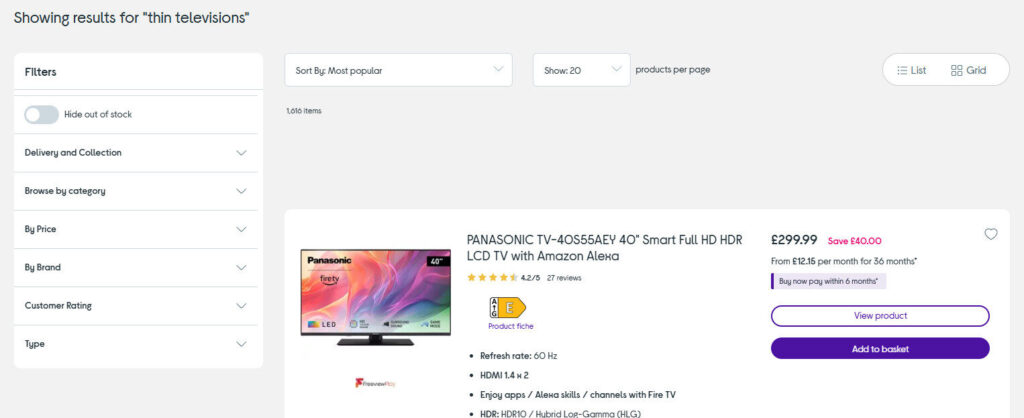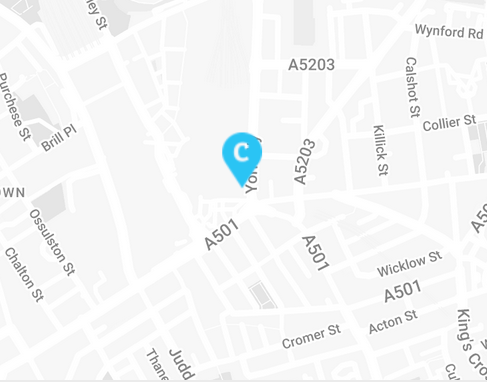Ecommerce Site Search Data & Best Practices

The True Power of Ecommerce Search: Why It’s Your Ecommerce website’s Secret Weapon!
Every ecommerce website that has any kind of inventory size will have site search available for customers. But just how effective is site search, and what are the key conversion rate optimisation tips that can help you get even more from your ecommerce site search?
Well Constructor has conducted one of the most detailed studies into site search on ecommerce websites and its impact on revenue and performance. So first we’ll share some of their findings and then we’ll hopefully provide some useful tips to help you convert more from your own ecommerce site search.

Some Key Data:
- – The study analysed transactions amounting to £7.7 billion in revenue. That’s a lot of sales and a lot of searching!
- – Site search users generate 44% of total ecommerce revenue despite being only 24% of the visitors
– Searchers convert at 2.5x the rate of non-searchers
– Health & beauty sector sees the biggest impact, with searchers driving 57% of revenue
– Attractive search results double click-through rates
– Study analysed 609 million searches across 113 global retail sitesHowever when you look at how big the ecommerce market is £7.7 billion is a drop in the ocean!
– The total number of UK e-commerce shoppers per year was estimated to be over 50 million in 2024, which is projected to reach 62.1 million by 2025, according to Statista forecasts - – Then if we look at the US: 268 million digital buyers in 2022, projected growth to be at 285 million this year
– Global online retail sales expected to hit £5.8 trillion by 2025
The Numbers Don’t Lie: Site Search is a Revenue Cheat Code
The audit by Constructor was amazing and showed the true power of site search and reminded everyone that while you might trust your site search to whichever plugin, app or out of the box tool you have, focusing on it as a user journey and its quantitative and qualitative data can have dramatic results for online retailers bottom lines. Here is the breakdown of site search percentage Vs revenue it drove, based on key industries.
Health & Beauty
– 25% of traffic (searchers)
– 57% of revenue
General Merchandise
– 41% of traffic
– 63% of add-to-cart activity
Home Products
– 14% of traffic
– 42% of revenue
The Beauty of Attractive Search Results
Attractive search results aren’t just pretty – they’re profitable. Search results optimised for maximum conversion potential generate nearly twice the click-through rates compared to poorly optimised results, according to Constructor’s measurement data. The study found that a small increase in search result attractiveness, and click-through rates can jump by nearly 4%.
So what is search attractiveness?
Constructor have built their own proprietary grading system for site search, based on variables such as user behaviour preferences, results relevance, in-shopping activity.
At Converted we simplify it to a few main question, and for each one answered positively your performance from site search should improve:
- – Is it easy for a user to find your search function on different devices?
- – Is the search and autocomplete intuitive?
- – Does it search by word only or can it look by context?
- – Can your search function be customised to include miss-spells and other associated words to trigger the same results? (A ‘Queen’ t-shirt Vs ‘Rock Bands’ t-shirt)
- – Are the search results well presented?
- – Can a user further refine the search results?
- – Does the search results offer a personalised experience?
- – Do the results surface out of stock items?
- – Do the search results show price and stock levels?
- – Do the search results order customisable?
Tips For Improving Your Ecommerce Site Search
Implement autocomplete
We love a good data point here at Converted and here are a few you might want to know about autocomplete in your ecommerce site search:
- – Implementing autocomplete can increase conversion rates by 24% on average
- – Every word added to a search query drives a 15% increase in conversion rate
- – Adding autocomplete increases the average search length by 1.6 words (from 1.7 to 3.3 words)
Mobile phones and search engines offer predictive auto-complete and by offering autocomplete on the search and progressive results you an achieve much better performance.

Personalisation
When search results are tailored to a user’s previous behavior, preferences, and purchase history, they’re more likely to see products or content that genuinely interest them. This relevance drives higher engagement and conversion rates.
Think about it, you have been looking on the website for the perfect shortsleeved summer party shirt, but there are too many options. So you type in ‘red summer shirts’ into the site search. The results you get back are a mix of formal work shirts, longsleeve shirts, overshirts with the occasional shortsleeved shirt mixed in. They’re all red, but if the search results were personalised it could look at previous purchase history or in session browsing habits and surface more relevant red shortsleeved shirts higher up in the results.
Filtering
Referencing our last point, improving site search filtering can have a significant impact on search results. Allowing a user to search and then further filter down the results speeds up the process of finding the right item. Making sure your filtering facets and options are relevant and effective is a key way you can improve your ecommerce site search.
Look at this example for ‘thin televisions’ we conducted on Curry’s website. There is a host of relevant filtering options you can choose from. Amazing…well wait. There’s a twist. We couldn’t open those filtering blades and select anything. With 1,600+ results you might want to narrow it down slightly!

Improve Product Data and Tagging
Are your products tagged correctly to appear in the right search results? It’s easily missed when you have a huge inventory of products and especially so if you import manafacturer-level product data. So make sure products are accurately named and tagged. Ensure you use your site search analytics to discover the search terms customers are actively searching for on your website and ensure you surface the best products for that intent. Make sure you optimise for customer language rather than internal or industry jargon.
Avoid the dreaded ‘Dead End’
So you haven’t the products for that particular search, what do you do? Well our advice is to avoid the dreaded dead end of ‘No Results’

Instead of nothing with your ‘no matches’ message, think about offering a different route, whether that’s products that match some of the search query, relvant category choices or products based on their previous history on your site.
Summary
So as you can see from Constructor and their detailed review of ecommerce site search and our own little facts, figures and tips, there is plenty of opportunity for you to convert more, by improving your site search. If want help with your ecommerce marketing or experimentation and testing on your own website search, then get in touch!
Blog Article Sources:
– Constructor’s “Beyond Relevance” study (2024)
– US ecommerce market data (2022-2025)
– Industry conversion rate studies
*Note: This Constructor study analysed data from October to December 2024.*



